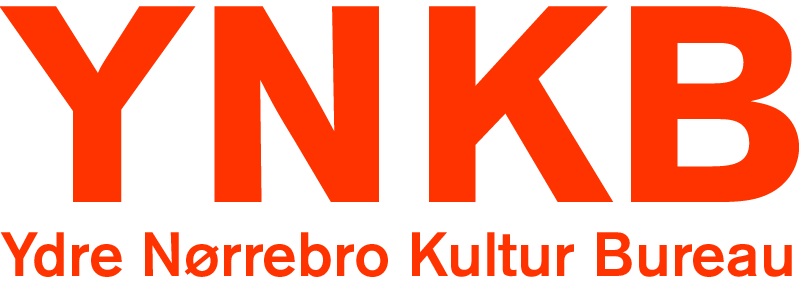9 – 12 august 2007
art and love reparationsworkshop

Flyer spread in the area of Blangstedgaard
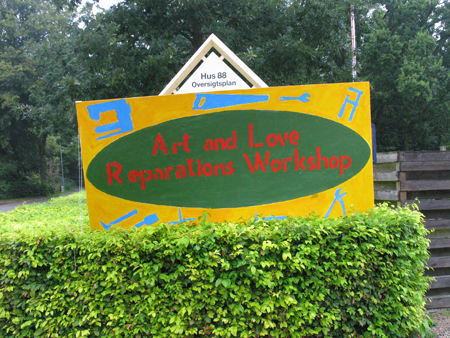
Billboard outsite Blangstedgaard
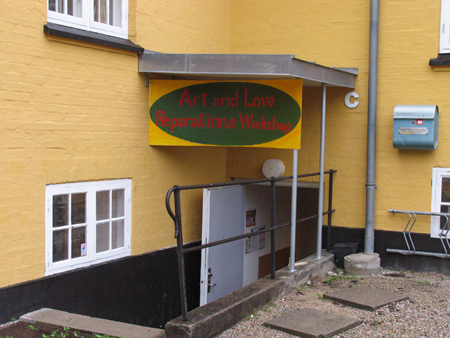
Entrance for the workshop at Blangstedgaard
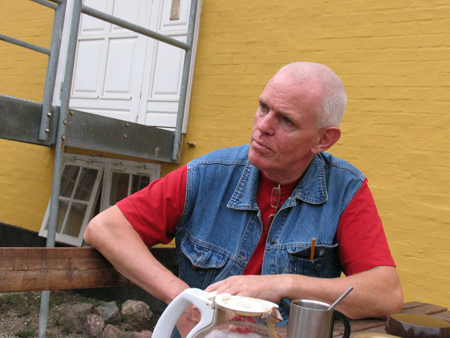
The workshops on Blangstedgaard was administrated by Danny, a perfect partner for YNKB and the Art and Love Reparation workshop. Repair and reuse is a part of Dannys ,combined with a creative inventiveness, which resulted in several inventions created from reuse.
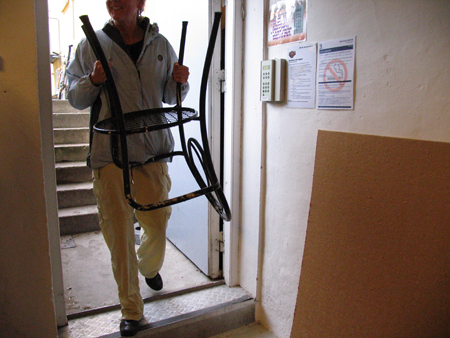
Charlotte comes with a gardenchait, the seat is broken.

Kirsten and Charlotte discuss the damage and how to repair it

Danny assists Shahryar and Shuna to recreate the bike with parts from other bikes.
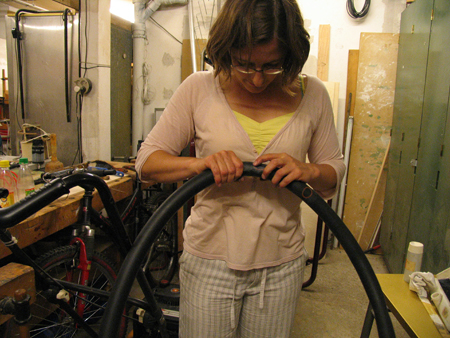
Mika mends a bicycle puncture.
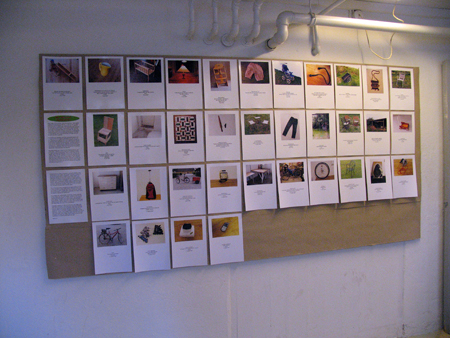
All the repaired objects
See All the repaired objects from the workshopp Art and Love Reparation
Affald udgør et af de største samfunds problemer, – også i global målestol. En søgning på søgemaskinen Alltheweb 29 november 2002 gav 17,5 millioner hits på affald, mens terror gav 7,3 millioner, 6,5 millioner på fattigdom, 3,7 på arbejdsløshed, 3 millionerpå racisme og hungersnød gav 1,5 millioner. Søgning på Google og andre søgemaskiner gav lignende resultater. (Se Zygmunt Bauman: Forspildte liv, s.35) Det drejer sig om materielt affald, hvor konsumerismen og kravet om nyt skaber større og større ophobninget af skrald men desværre også menneskeligt affald. Om mennesker, der ikke er behov for både i i-lande men navnligt u-lande, hvor overflødiggjorte befolkningsgrupper er på flugt eller lever indspærret i slumbyer og flygtningelejre uden nogen fremtid eller som jaget vildt ved Europa´s og USA ´s grænser.
Ved Genbrug og reparation renoveres forbrugsgenstande som vi holder af.
Det er en måde at værdisætte ting, som får en anden betydning og ny æstetik når de som masseproducerede forbrugsartikler blive bearbejdet på ny som enkelt stående objekter. Deraf kommer udtrykket kulturel renovation.
Samtidig skabes en anden form for økonomi end den markedet og konsumerismen reklamerer for.
I medierne handler økologi om biler og vindmøller men genbrug og reparation bliver ikke værdisat som et samfundsøkonomisk resourcebesparende alternativ.
Reparationsdage løser næppe verdens affaldsproblemer, men giver måske anledning til at overveje om en genstand virkelig er udtjent og skal på lossepladsen, eller om dens livstid kan forlænges med et lille greb. Desuden er det en sjov og måske den mest fornuftige form for kreativitet i en verden hvor stort set alt er opfundet og hvor jagten på nyt er blevet absurd. Der er intet der tyder på at større produktivitet eller flere opfindelser af dimser og forbrugs genstande hverken kan rede eller ændre verden, tværtimod. Så hvorfor ikke glæde sig over det vi allerede har og prøve at få det til at fungere på ny?
YNKB
Consumerism is a culture of addiction, driving its subjects to the consumption of ever-newer, “immaculate” products, in search of an ever-diminishing sense of satisfaction, always fleeting and never fully realized. Its most highly prized commodities come packaged in promises of enhanced pleasure, largely defined by increasing its purchaser’s desirability on the open market. In this situation, even a supposedly utilitarian object is defined less by its intrinsic value than by extrinsic needs imposed upon it for ulterior purposes, namely the consumer’s need for not only self-esteem, but, ironically, a sense of self in the first place.
Two of the many factors constraining an objects ability to do this, is when it breaks in a way disallowing its restoration to the original condition or when it shows wear, both, exposing the owner to the symbolic threat of imperfection, vulnerability and death, hence the need for disposal and replacement.
As a healthy and, unfortunately, increasingly unusual response to this, Kirsten and Finn have initiated a project of restoring and repairing discarded objects, not with a view to returning them to some “perfect” condition, once again satisfying the aforementioned extrinsic “needs,” but so as to return them to intrinsic utility, without trying to hide the effects of accident, time and use, but to find within these, the chance for singularization.
A beautiful precedent for this can be found in Zen pottery that uses chips and breaks in the object that, rather than devaluing it, are an opportunity for the introduction of new color and mark. Like this pottery, the aesthetic affirmed by Kirsten and Finns project isn’t one of impossible completion and finality, ironically subverted, covertly, in the interest of new consumption, but one of open participation and change that doesn’t hide from life’s signs of fragility and death, but, rather, finds in these sources for the introduction of creativity giving rise to the new.
Keith S Pirlot
